MV AGUSTA
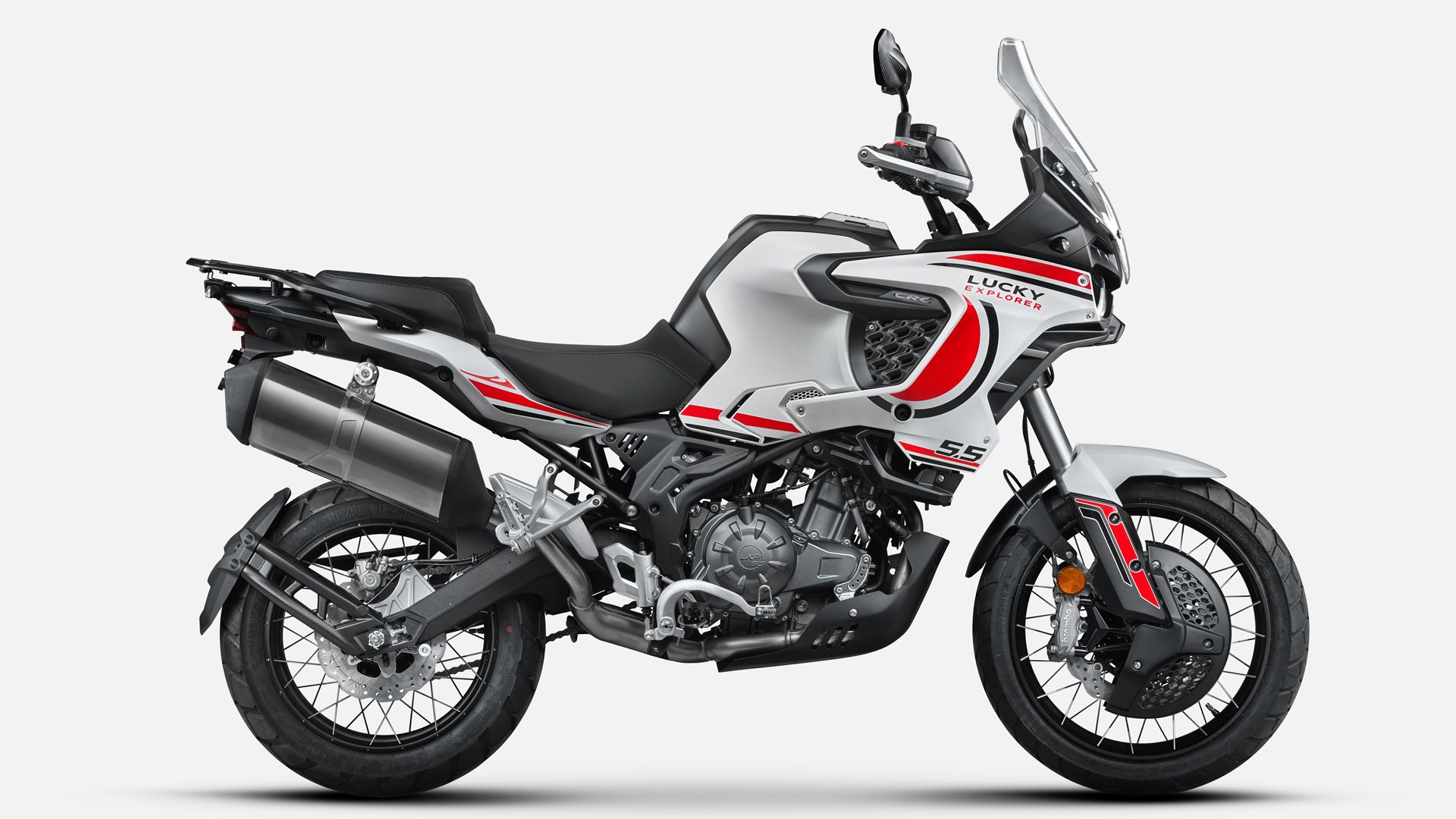
Lucky Explorer 5.5: the Dakarian of the A2
The Lucky Explorer 5.5 is the model of the firm under which MV Agusta protects its new adventure-oriented trail models, which falls into the A2 segment thanks to its 35 kW two-cylinder in-line engine.
The Cagiva Elefant became famous in the late 1980s and early 1990s for their participation in desert races, especially the Paris Dakar, a race they managed to win with Edi Orioli a couple of times. The official team of the Italian firm was sponsored by the Lucky Strike cigarette brand, whose colors versions of the series motorcycle were manufactured.
Now MV Agusta, heiress to the Castiglioni empire, which at that time ran Cagiva and Ducati, launches a new range of motorcycles focused on adventure, for which they have chosen a name that does not stop remembering those times, Lucky Explorer, even more so if It is taken into account that at least the first models are decorated with those same colors, including its recognizable red circle.
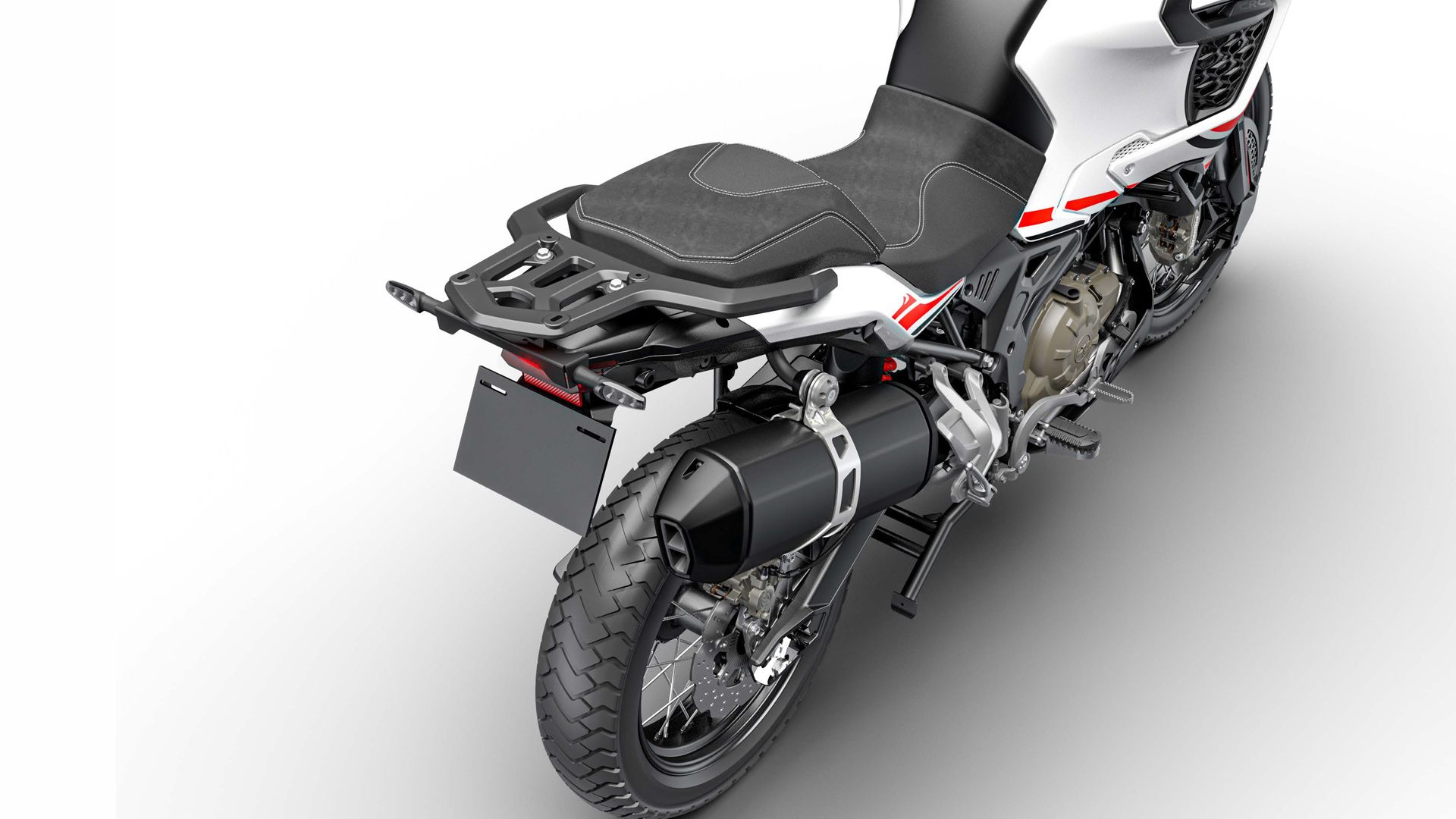
SMALLER VERSION...The Lucky Explorer 5.5 is the smaller displacement version of the series, but the truth is that it shares the main lines with its older sister, the 9.5, to the point where you really have to look at the differences that separate it to identify each of them. In this case we find a motorcycle equipped with a half-liter engine with two cylinders in line that is similar to the one used by Benelli, with which a collaboration agreement has been reached.
This 554 cc engine is not exactly the same as the one used by the Benelli, as its dimensions have increased to 70.5 x 71 mm to achieve the 554 cc displacement that gives the model its name. The power is 35 kW (48 hp) at 7,500 rpm, which falls within the A2 license category. It is also a new generation engine with the crankshaft set at 270 degrees to achieve a pulse similar to a V2 at 90 degrees, and it has a balance shaft.
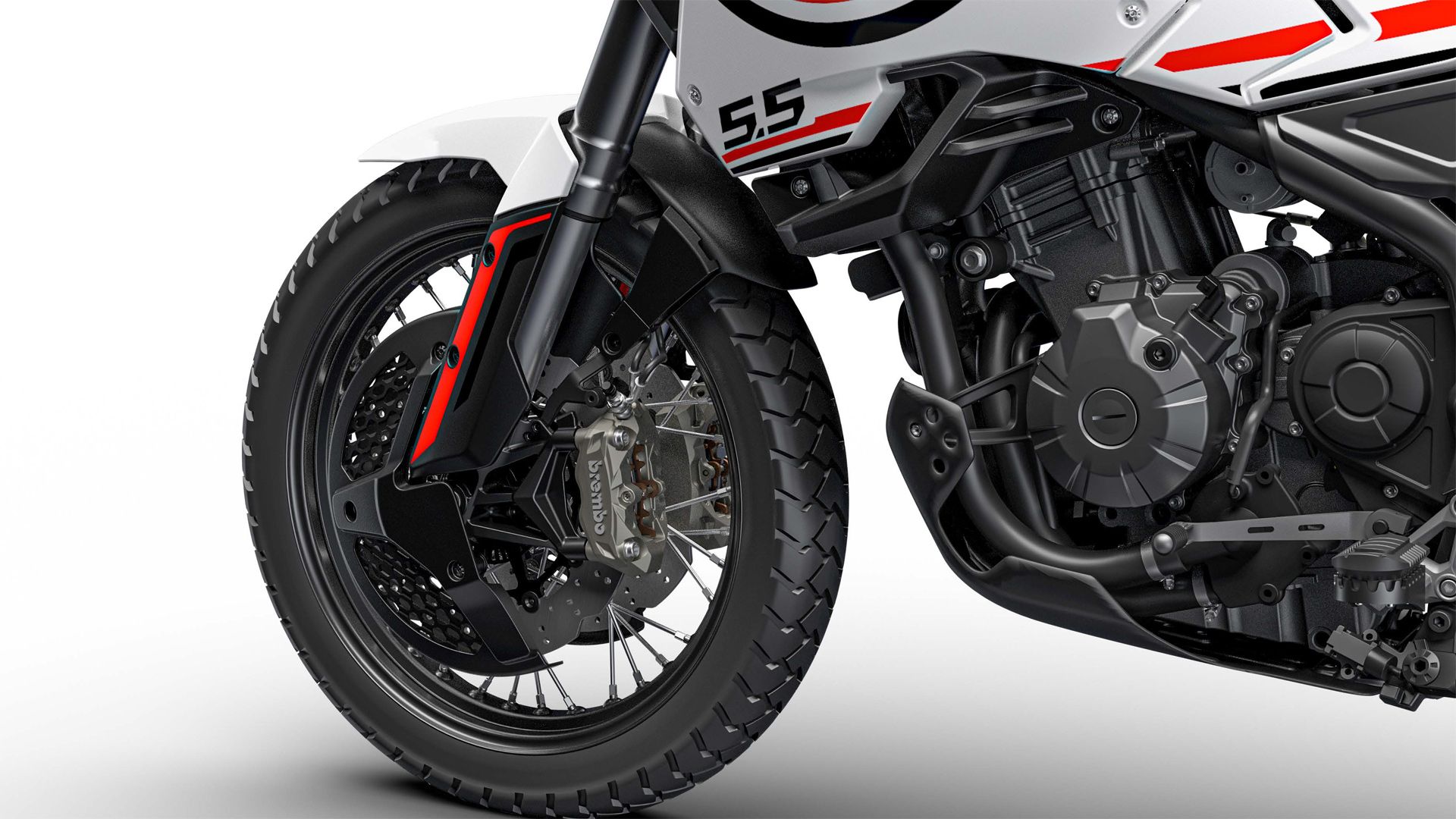
TUBULAR FRAME...Unlike its older sister, the chassis of the Lucky Explorer 5.5 is a tubular steel whose cradle is not closed, but instead keeps the engine hanging, anchored at the front and held at the rear, but with a removable rear subframe to facilitate its replacement if it becomes deformed in the event of a fall. For the swingarm, aluminum has been used in a banana-type structure that increases the ground clearance of the rear suspension link assembly.
The suspensions are signed by Kayaba, with a front inverted fork with 43 mm stanchions and a fairly discreet 135 mm travel, and a shock absorber from the same firm that gives the wheel 162 mm of travel. In both cases, you can adjust the spring preload and the compression in the fork and the extension in the shock absorber. Thanks to these routes, the height of the seat remains at 860 mm, a measure that will facilitate its use not only for the less tall, but also for the less experienced.
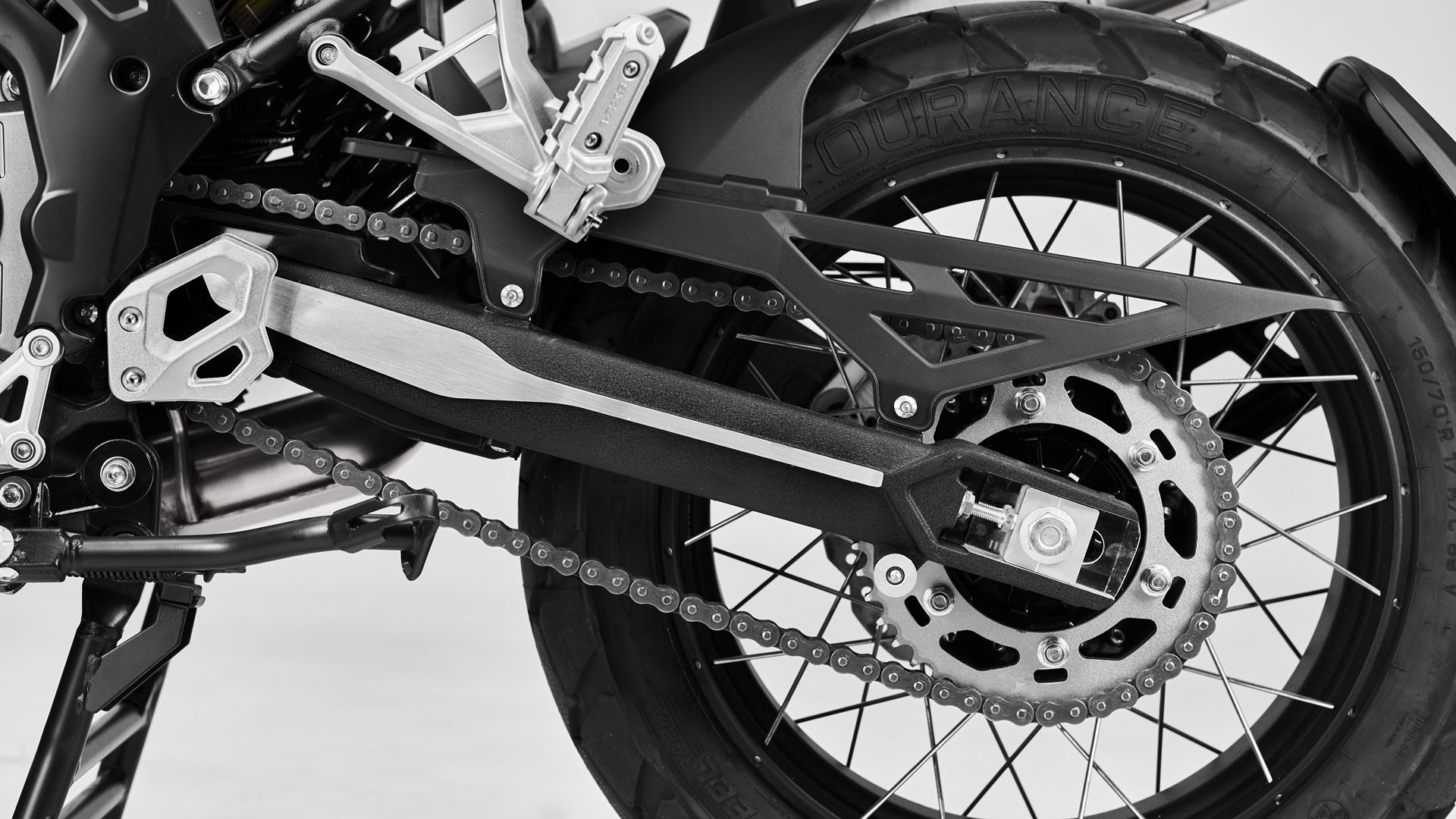
TRAIL WHEELS...The orientation of the Lucky Explorer 5.5 is totally mixed, with options to drive through the countryside, but without this being its usual environment. The wheels are 19” at the front and 17” at the rear with a 100/80-19” front tire and a 150/70-17” rear tire. Both rims are spoked and prepared to use tubeless tires. Brakes include dual 320mm petal discs with four-piston Brembo calipers fitted with guards and a single 260mm disc with the same type of caliper and standard-functioning ABS.
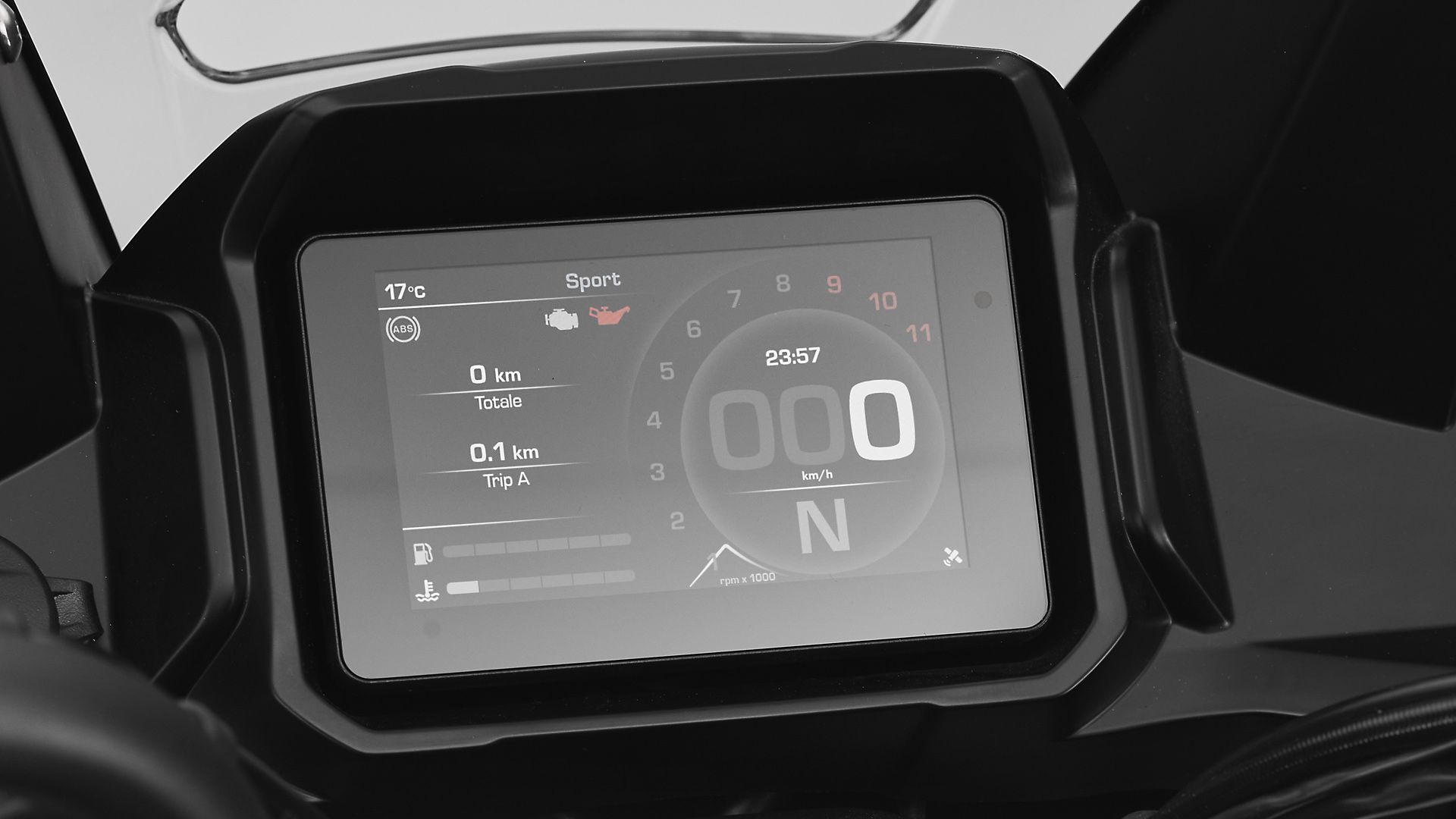
SIMPLE...The Lucky Explorer 5.5 has been conceived as a simple and economical motorcycle, without special complexity, so that it does not have electronic aids beyond ABS, although it does have driving modes guided by its electronic accelerator. It does, however, include an instrument panel made up of a high-resolution 5” color TFT screen that can be connected via mobile phone to the MV Agusta Ride application, which allows for a navigator on the screen. It also has a USB charging port.

The bodywork follows the same line as its older sister, the 9.5, with an aesthetic reminiscent of those motorcycles participating in the Paris Dakar, but with smaller dimensions, the wheelbase is only 1,505 mm and the dry weight of 220 kg, which will bring it to around 250 kg with the 20-litre tank full of petrol. It will also optionally have an aluminum grill, trunk and side cases not only to increase its adventurous aesthetics, but also to facilitate long-distance trips.
by Pepe Burgaleta

Nenhum comentário:
Postar um comentário